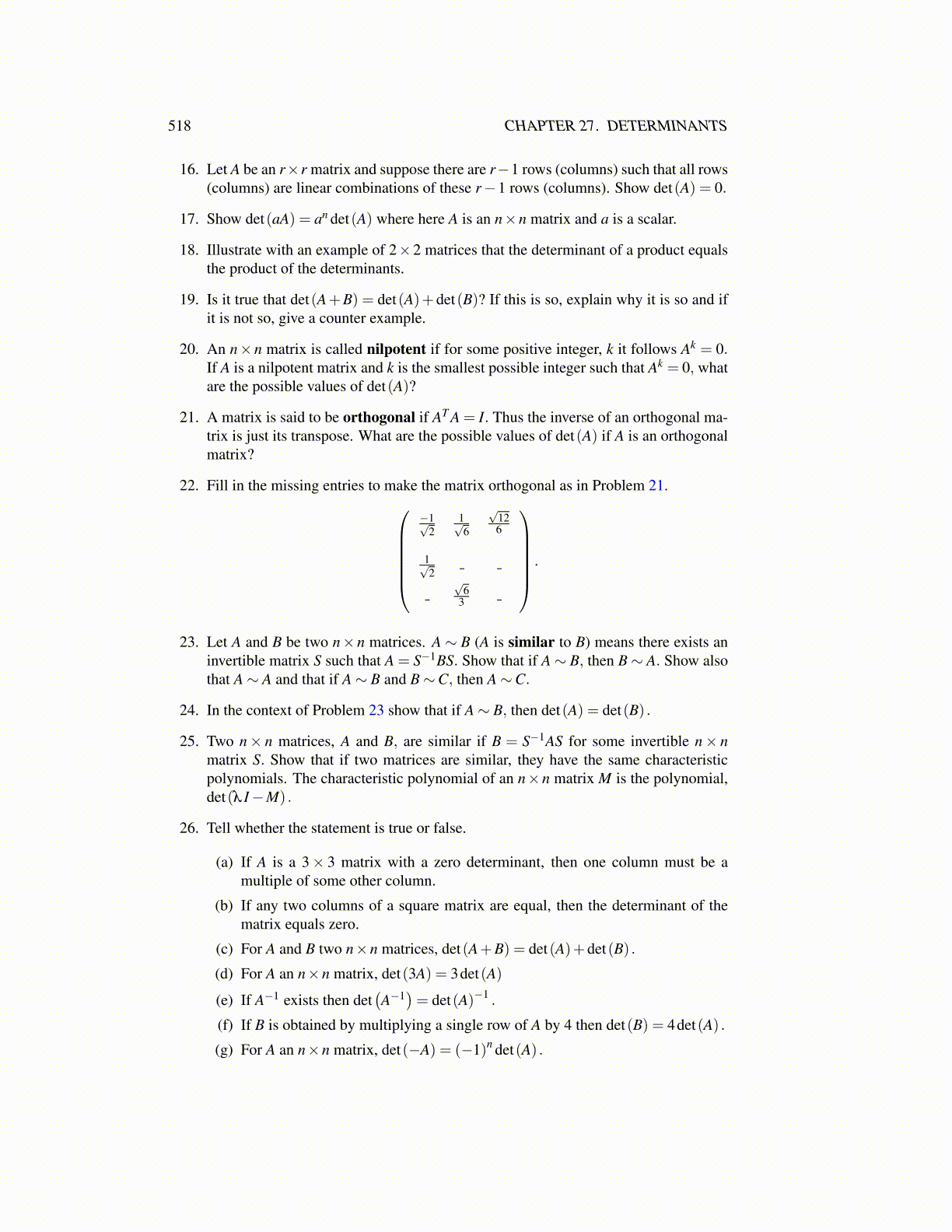
518 CHAPTER 27. DETERMINANTS
16. Let A be an r×r matrix and suppose there are r−1 rows (columns) such that all rows(columns) are linear combinations of these r−1 rows (columns). Show det(A) = 0.
17. Show det(aA) = an det(A) where here A is an n×n matrix and a is a scalar.
18. Illustrate with an example of 2×2 matrices that the determinant of a product equalsthe product of the determinants.
19. Is it true that det(A+B) = det(A)+det(B)? If this is so, explain why it is so and ifit is not so, give a counter example.
20. An n×n matrix is called nilpotent if for some positive integer, k it follows Ak = 0.If A is a nilpotent matrix and k is the smallest possible integer such that Ak = 0, whatare the possible values of det(A)?
21. A matrix is said to be orthogonal if AT A = I. Thus the inverse of an orthogonal ma-trix is just its transpose. What are the possible values of det(A) if A is an orthogonalmatrix?
22. Fill in the missing entries to make the matrix orthogonal as in Problem 21.−1√
21√6
√126
1√2
√6
3
.
23. Let A and B be two n×n matrices. A ∼ B (A is similar to B) means there exists aninvertible matrix S such that A = S−1BS. Show that if A∼ B, then B∼ A. Show alsothat A∼ A and that if A∼ B and B∼C, then A∼C.
24. In the context of Problem 23 show that if A∼ B, then det(A) = det(B) .
25. Two n× n matrices, A and B, are similar if B = S−1AS for some invertible n× nmatrix S. Show that if two matrices are similar, they have the same characteristicpolynomials. The characteristic polynomial of an n×n matrix M is the polynomial,det(λ I−M) .
26. Tell whether the statement is true or false.
(a) If A is a 3× 3 matrix with a zero determinant, then one column must be amultiple of some other column.
(b) If any two columns of a square matrix are equal, then the determinant of thematrix equals zero.
(c) For A and B two n×n matrices, det(A+B) = det(A)+det(B) .
(d) For A an n×n matrix, det(3A) = 3det(A)
(e) If A−1 exists then det(A−1
)= det(A)−1 .
(f) If B is obtained by multiplying a single row of A by 4 then det(B) = 4det(A) .
(g) For A an n×n matrix, det(−A) = (−1)n det(A) .